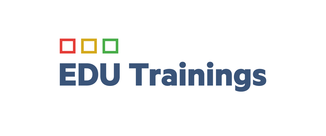Detail kurzu
Certified DevSecOps Professional (CDP)
EDU Trainings s.r.o.
Popis kurzu
The CDP course provides an introduction to DevSecOps processes, tools, techniques, and the creation of secure SDLC and CI/CD DevSecOps pipelines by utilizing SCA, SAST, DAST, and Security as Code.
Course Inclusions:
Course Manual
Course Videos and Checklists
60+ Guided Exercises
60 days Online Lab Access
Access to a dedicated Mattermost channel
One exam attempt for Certified DevSecOps Professional Certification Upon completion of the course, you will be able to:
Gain a solid foundation of the CI/CD pipelines, DevOps, and Secure SDLC.
Learn to understand and apply the principles, values, and practices that enable DevSecOps.
Learn to create a culture of sharing and collaboration among various organizational stakeholders and departments.
Understand the critical parts of DevSecOps processes, tools, and techniques.
Create and maintain DevSecOps pipelines using SCA, SAST, DAST, Infrastructure as Code, Compliance as Code, and Security as code best practices.
Ensure the hardening and compliance of infrastructure according to the organization’s policies.
Learn to consolidate and centrally manage security results from multiple automation and tooling from a CI/CD pipeline.
Plan and mature an organization’s DevSecOps program.
Course Inclusions:
Course Manual
Course Videos and Checklists
60+ Guided Exercises
60 days Online Lab Access
Access to a dedicated Mattermost channel
One exam attempt for Certified DevSecOps Professional Certification Upon completion of the course, you will be able to:
Gain a solid foundation of the CI/CD pipelines, DevOps, and Secure SDLC.
Learn to understand and apply the principles, values, and practices that enable DevSecOps.
Learn to create a culture of sharing and collaboration among various organizational stakeholders and departments.
Understand the critical parts of DevSecOps processes, tools, and techniques.
Create and maintain DevSecOps pipelines using SCA, SAST, DAST, Infrastructure as Code, Compliance as Code, and Security as code best practices.
Ensure the hardening and compliance of infrastructure according to the organization’s policies.
Learn to consolidate and centrally manage security results from multiple automation and tooling from a CI/CD pipeline.
Plan and mature an organization’s DevSecOps program.
Obsah kurzu
Chapter 1: An Introduction to the BasicsWhat is DevOps?
DevOps Building Blocks- People, Process and Technology.
DevOps Principles – Culture, Automation, Measurement and Sharing (CAMS)
Benefits of DevOps – Speed, Reliability, Availability, Scalability, Automation, Cost and Visibility.
What is Continuous Integration and Continuous Deployment?.
Continuous Integration to Continuous Deployment to Continuous Delivery.
Continuous Delivery vs Continuous Deployment.
General workflow of CI/CD pipeline.
Blue/Green deployment strategy
Achieving full automation.
Designing a CI/CD pipeline for web application.
Common Challenges faced when using DevOps principle.
Case studies on DevOps of cutting edge technology at Facebook, Amazon and Google
Demo: A full enterprise grade DevSecOps Pipeline.
Chapter 2: Introduction to the Tools of the trade
Gitlab/Github
Docker
Gitlab CI/Github Actions/Circle CI/Jenkins/Travis/
OWASP ZAP
Ansible
Inspec
Hands-On Labs: Building a CI Pipeline using Gitlab CI/Jenkins/Travis and Gitlab/Github Actions.
Hands-On Labs: Use the above tools to create a complete CI/CD pipeline.
Note: Once you learn the above tools, you will be able to create DevSecOps Pipelines in Cloud providers like AWS, Azure DevOps etc.,
Chapter 3: Secure SDLC and CI/CD pipeline
What is Secure SDLC
Secure SDLC Activities and Security Gates
Security Requirements ( Requirements)
Threat Modelling (Design)
Static Analysis and Secure by Default ( Implementation)
Dynamic Analysis(Testing)
OS Hardening, Web/Application Hardening (Deploy)
Security Monitoring/Compliance (Maintain)
DevSecOps Maturity Model (DSOMM)
Maturity levels and tasks involved
4-axes in DSOMM
How to go from Maturity Level 1 to Maturity Level 4
Best practices for Maturity Level 1
Considerations for Maturity Level 2
Challenges in Maturity Level 3
Dream of achieving Maturity Level 2
Usings tools of the trade to do the above activities in CI/CD
Embedding Security as part of CI/CD pipeline
DevSecOps and challenges with Pentesting and Vulnerability Assessment.
Hands-on: Create a CI/CD pipeline suitable for modern application.
Hands-on: Manage the findings in a fully automated pipeline.
Chapter 4: Software Component Analysis (SCA) in CI/CD pipeline
What is Software Component Analysis.
Software Component Analysis and Its challenges.
What to look in a SCA solution (Free or Commercial).
Embedding SCA tools like OWASP Dependency Checker, Safety, RetireJs and NPM Audit, Snyk into the pipeline.
Demo: using OWASP Dependency Checker to scan third party component vulnerabilities in Java Code Base.
Hands-On Labs: using RetireJS and NPM to scan third party component vulnerabilities in Javascript Code Base.
Hands-On Labs: using Safety/pip to scan third party component vulnerabilities in Python Code Base.
Chapter 5: SAST (Static Analysis) in CI/CD pipeline
What is Static Application Security Testing.
Static Analysis and Its challenges.
Embedding SAST tools like Find Bugs into the pipeline.
Secrets scanning to prevent secret exposure in the code.
Writing custom checks to catch secrets leak age in an organization.
Hands-On Labs:
using SpotBugs to scan Java code.
using trufflehog/gitrob to scan for secrets in CI/CD pipeline.
using brakeman/bandit to scan Ruby on Rails and Python Code Base.
Chapter 6: DAST (Dynamic Analysis) in CI/CD pipeline
What is Dynamic Application Security Testing.
Dynamic Analysis and Its challenges ( Session Management, AJAX Crawling )
Embedding DAST tools like ZAP and Burp Suite Dastardly into the pipeline.
SSL misconfiguration testing
Server Misconfiguration Testing like secret folders and files.
Creating baseline scans for DAST.
Hands-On Labs: using ZAP to configure per commit/weekly/monthly scans.
Chapter 7: Infrastructure as Code and Its Security
What is Infrastructure as Code and its benefits.
Platform + Infrastructure Definition + Configuration Management.
Introduction to Ansible.
Benefits of Ansible.
Push and Pull based configuration management systems
Modules, tasks, roles and Playbooks
Tools and Services which helps to achieve IaaC
Hands-On Labs: Docker and Ansible
Hands-On Labs: Using Ansible to create Golden images and harden Infrastructure.
Chapter 8: Compliance as code
Different approaches to handle compliance requirements at DevOps scale
Using configuration management to achieve compliance.
Manage compliance using Inspec/OpenScap at Scale.
Hands-On Labs: Create a Inspec profile to create compliance checks for your organization
Hands-On Labs: Use Inspec profile to scale compliance.
Chapter 9: Vulnerability Management with custom tools
Approaches to manage the vulnerabilities in the organization.
Hands-On Labs: Using Defect Dojo for vulnerability management.
Certifikát
Na dotaz.
Hodnocení
Organizátor
Podobné kurzy
podle názvu a lokality









